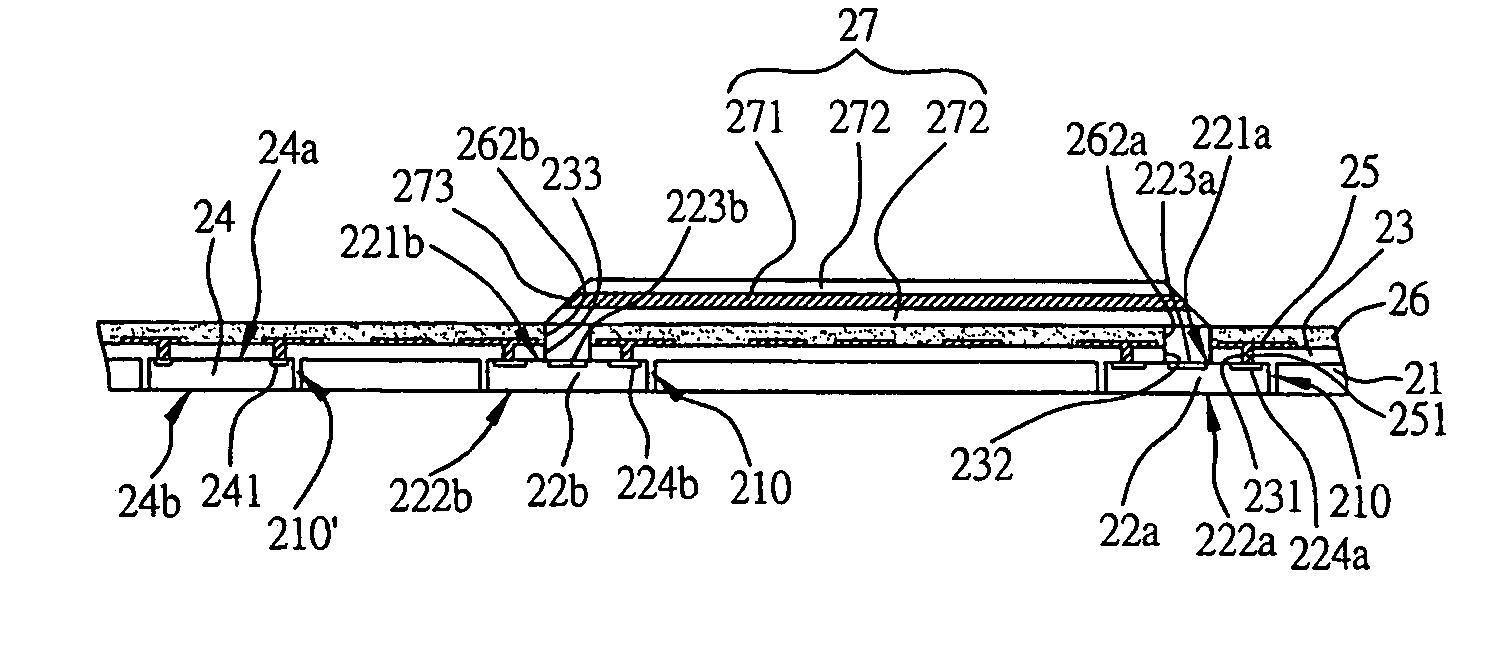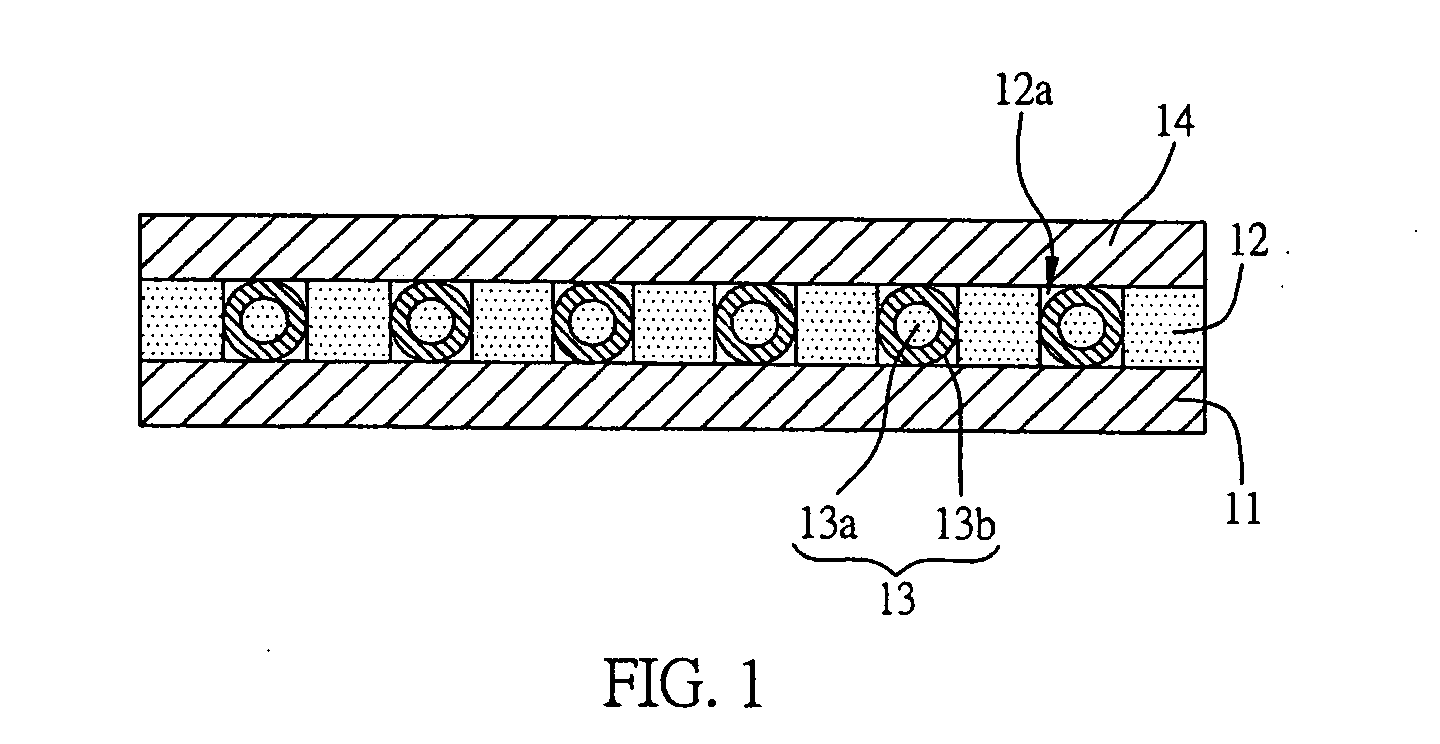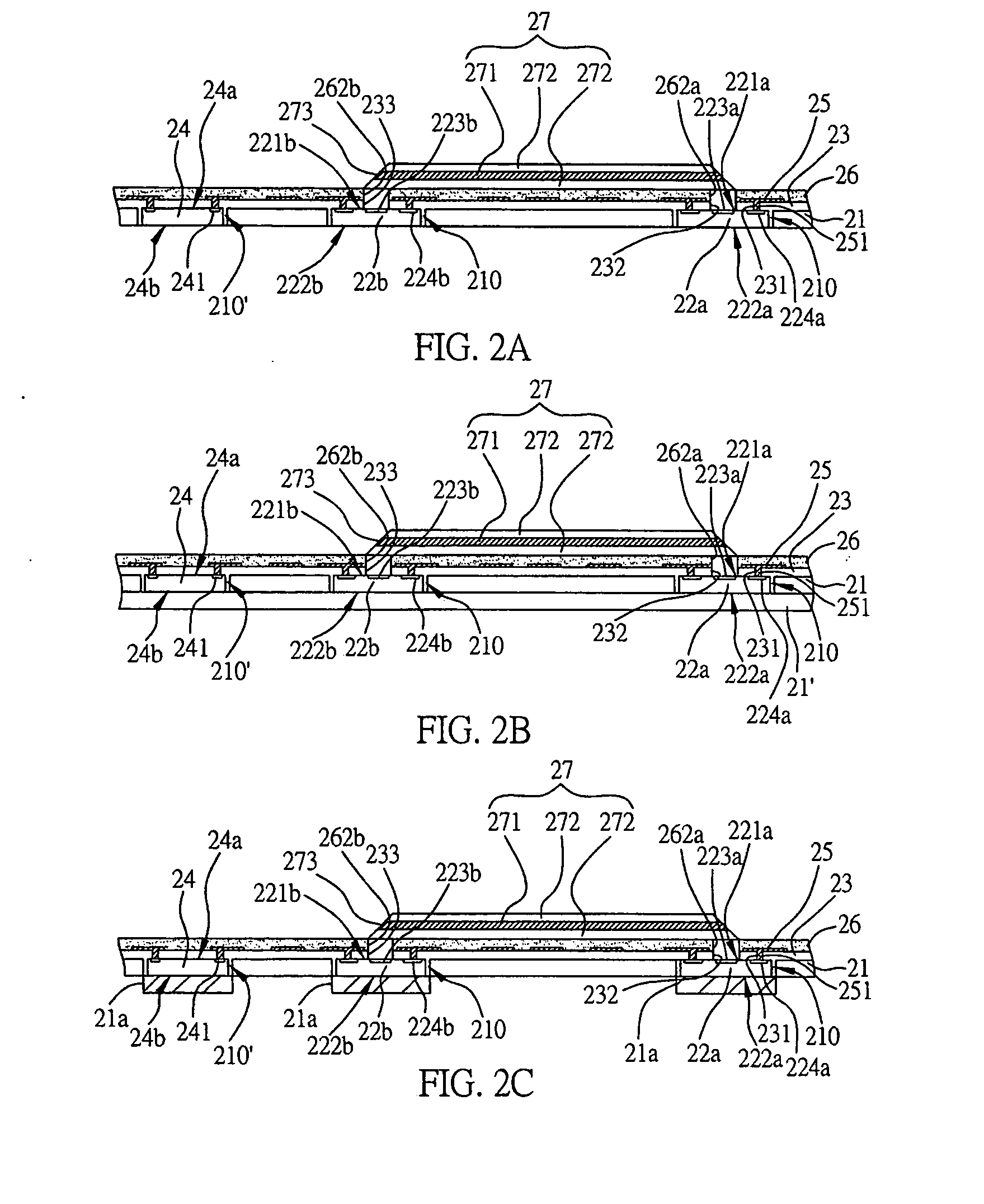Circuit board with optoelectronic component embedded therein
- Summary
- Abstract
- Description
- Claims
- Application Information
AI Technical Summary
Benefits of technology
Problems solved by technology
Method used
Image
Examples
first embodiment
[0040] Referring to FIG. 2A, which is a cross-sectional diagram, illustrating the first embodiment of the present invention of the circuit board with optoelectronic component embedded therein, comprises: a carrier board 21 with at least two through openings 210, and the first and second optoelectronic components 22a, 22b are disposed in the openings 210 respectively; an dielectric layer 23 formed on the surface of the carrier board 21, the first and second optoelectronic components 22a, 22b; and a circuit layer 25 formed on the surface of the dielectric layer 23.
[0041] The carrier board 21 could be metal board, ceramic board, insulating board and organic circuit board, or any board mentioned here forming a stack structure freely; therein the organic circuit board is printed circuit board or IC packaging substrate. The use of metal board or ceramic board can be used as a heatsink for the first and second optoelectronic components 22a, 22b, or using the organic circuit board as the c...
second embodiment
[0049] Referring to FIG. 2B, which is a cross-sectional diagram, illustrating the second embodiment of the present invention of the circuit board with optoelectronic component embedded therein, has a difference comparing to the previous embodiment. Another carrier board 21′ is attached to the bottom surface of the carrier board 21, and the carrier board 21′ could be metal board, ceramic board, insulating board and organic circuit board, or any board mentioned here forming a stack structure freely; therein the organic circuit board is printed circuit board or IC packaging substrate; and if the carrier board 21′ is made form metal board or ceramic board, the heat generated by the first and second optoelectronic components 22a, 22b and the semiconductor component 24 during operation can be diffused effectively, which strengthen the heat dissipation efficiency of the circuit board with optoelectronic component embedded therein.
[0050] Referring to FIG. 2C, a heatsink block 21a is dispos...
third embodiment
[0051] Referring to FIG. 2D, a cross-sectional diagram illustrating the third embodiment of the present invention of the circuit board with optoelectronic component embedded therein, has a difference comparing to the previous embodiment, where a protecting shield such as an encapsulant 28 is formed on the optical transmission element 27 and the insulating protecting layer 26, to protect the optical transmission element 27 from damage by the outside influence, thereby increases the lifetime of the product.
[0052] Referring to FIG. 2E illustrating another embodiment of the optical transmission element protection of the present invention, where a protecting shield such as metallic case 28′ is formed on the optical transmission element 27 and the insulating protecting layer 26, to protect the optical transmission element 27.
PUM
 Login to View More
Login to View More Abstract
Description
Claims
Application Information
 Login to View More
Login to View More - R&D
- Intellectual Property
- Life Sciences
- Materials
- Tech Scout
- Unparalleled Data Quality
- Higher Quality Content
- 60% Fewer Hallucinations
Browse by: Latest US Patents, China's latest patents, Technical Efficacy Thesaurus, Application Domain, Technology Topic, Popular Technical Reports.
© 2025 PatSnap. All rights reserved.Legal|Privacy policy|Modern Slavery Act Transparency Statement|Sitemap|About US| Contact US: help@patsnap.com



